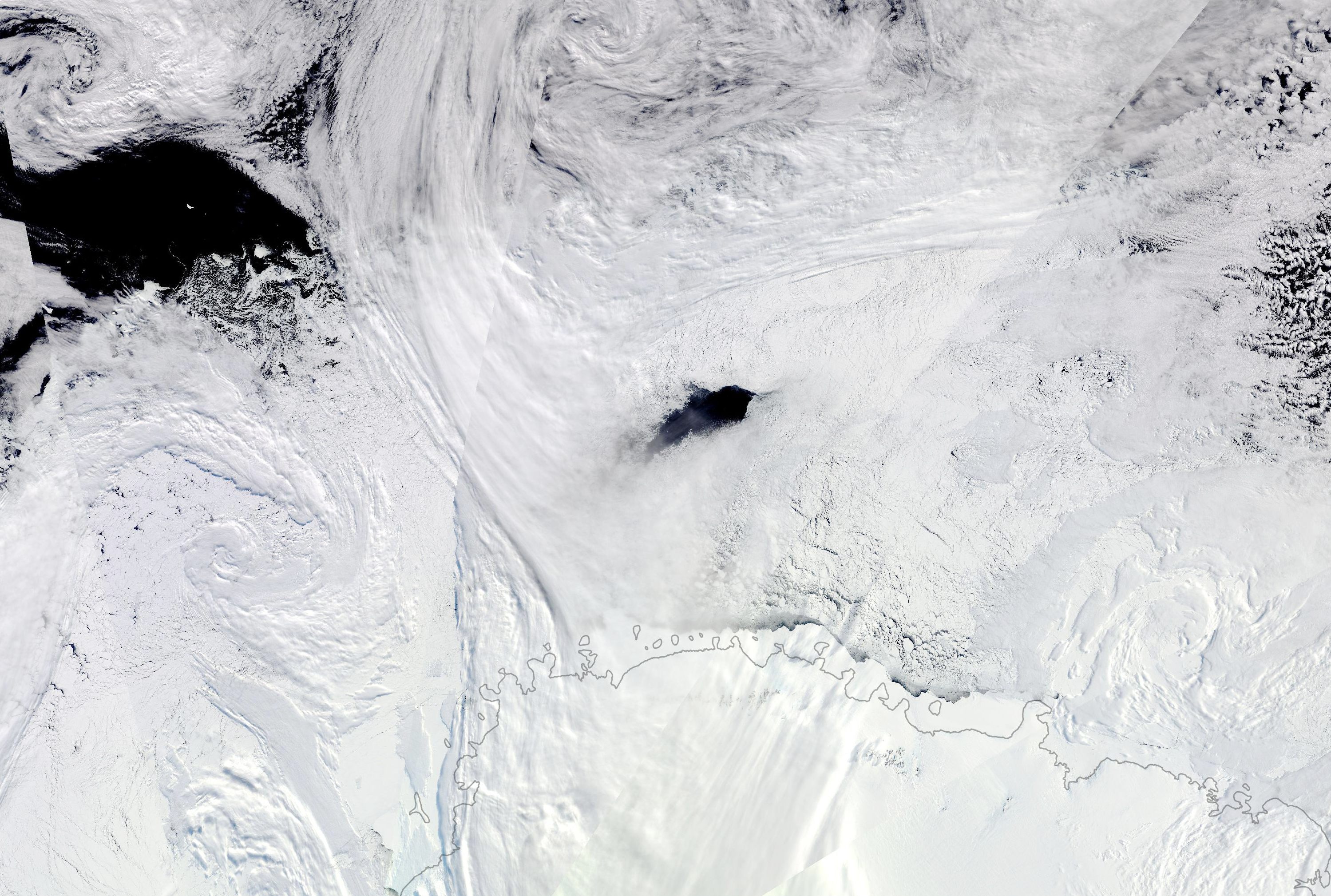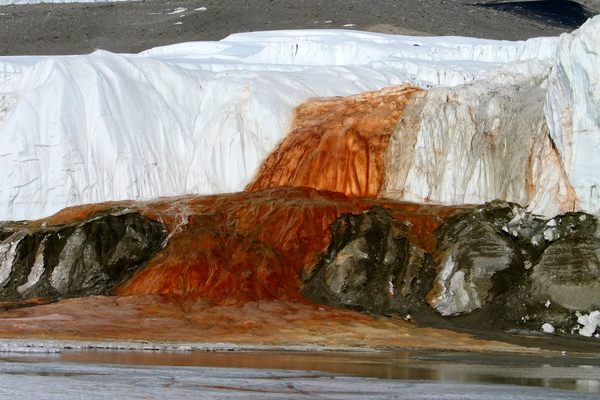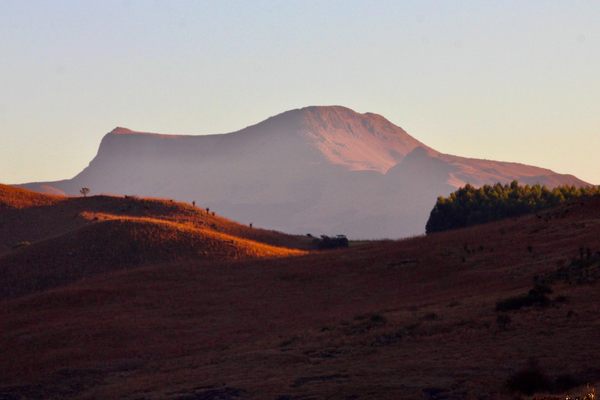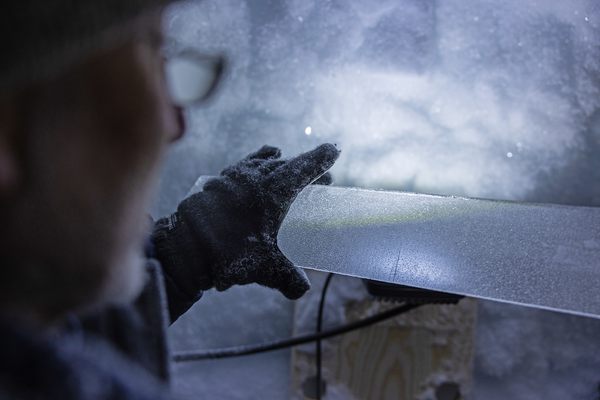What’s Up With Those Deep Gashes in Antarctic Ice?
Researchers just got a closer look.

During austral winter, which stretches from June to September, Antarctica is carpeted with nearly seven million square miles of ice. For several decades, scientists looking at satellite imagery of those frozen swaths have noticed blue-black cavities where the water and ice open up to the air and sky. These jagged holes are known as polynyas, and they can be huge—in 2016 and 2017, gashes in the Weddell Sea were more than 13,000 square miles wide. They persist even in the freezing, windy darkness, when temperatures plummet to a relentless -58 degrees Fahrenheit.
There’s a lot we still don’t know about these pits: We’re not yet sure, for instance, how they affect the atmosphere—they may release carbon dioxide that had been stagnant and stored in the deep ocean—and it’s unclear what they mean for creatures swimming inside them. (Analogs in the Arctic, for instance, become food-rich oases.) In Antarctica, scientists are still chipping away at an even more fundamental question: How the heck do these holes get there?

To answer that, a team led by researchers at the University of Washington took a creative approach that wedded several different perspectives, from diving deep to soaring far overhead. The research, recently published in Nature, was co-authored by scientists from the Scripps Institution of Oceanography and assisted by satellite imagery, free-floating sensors, and brigade of elephant seals with instruments strapped to their heads.
The researchers caught a lucky break when some of those floats—deployed by the Southern Ocean Carbon and Climate Observations and Modeling project—turned up near Maud Rise, an underwater mountain where satellites had captured images of polynyas in recent years. When the researchers took a closer look at what was happening in the water, they concluded that polynyas appear because of “a combination of factors that have to happen at the same time,” says Ethan Campbell, a graduate student in oceanography at the University of Washington, and lead author of the study.

The team found that, around the mountain, warmer, saltier water from deeper depths is pushed to the surface. Then, when storms blow in, a “deep, violent, vertical” mixing begins, Campbell says, which causes the water column to keep churning. All this kicks off a pattern that loops again and again, according to the NASA Earth Observatory, until the surrounding air warms a little come springtime or lighter, fresher water appears on top. The research echoes some aspects of previous findings: Like a separate recent study that attributed the 2017 Maud Rise polynya to polar cyclones, which chew up ice, this team found that “storms are essential,” Campbell adds.
Campbell and his collaborators found that it’s all these elements working in conjunction—winds, plus warm, salty water rushing to the surface and then cooling and sinking in a constant churn—that give rise to polynyas. “In any given year you could have several of these things happen, but unless you get them all, then you don’t get a polynya,” said co-author Stephen Riser, a University of Washington oceanographer, in a statement.
Scientific American reported that there’s a lot left to learn about what will happen to the holes as the climate continues to change—melting glaciers could add an influx of fresh water, for instance, which might make the water less likely to churn, but increasingly wild wind could exacerbate the flux. For now, at least, researchers are closer to understanding exactly how Antarctic polynyas crop up in the first place.



















Follow us on Twitter to get the latest on the world's hidden wonders.
Like us on Facebook to get the latest on the world's hidden wonders.
Follow us on Twitter Like us on Facebook